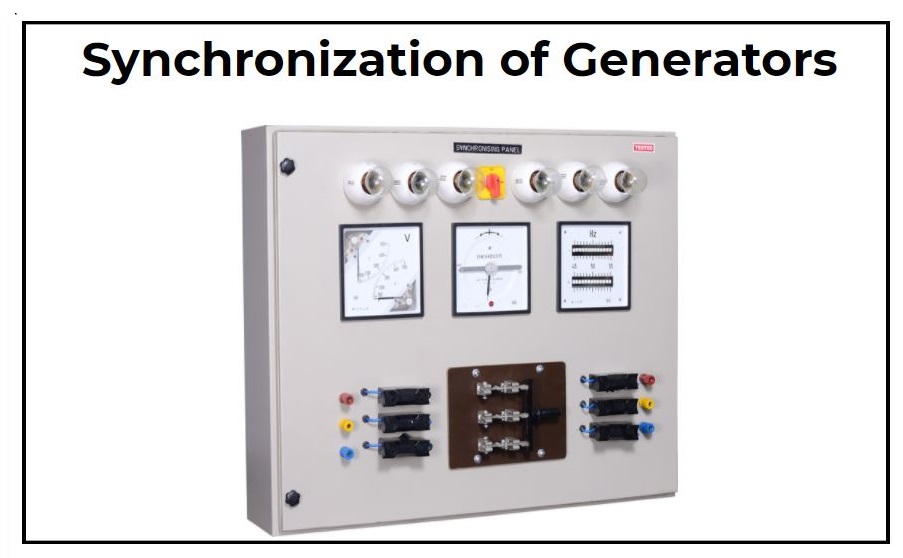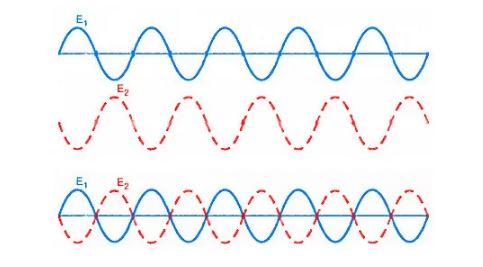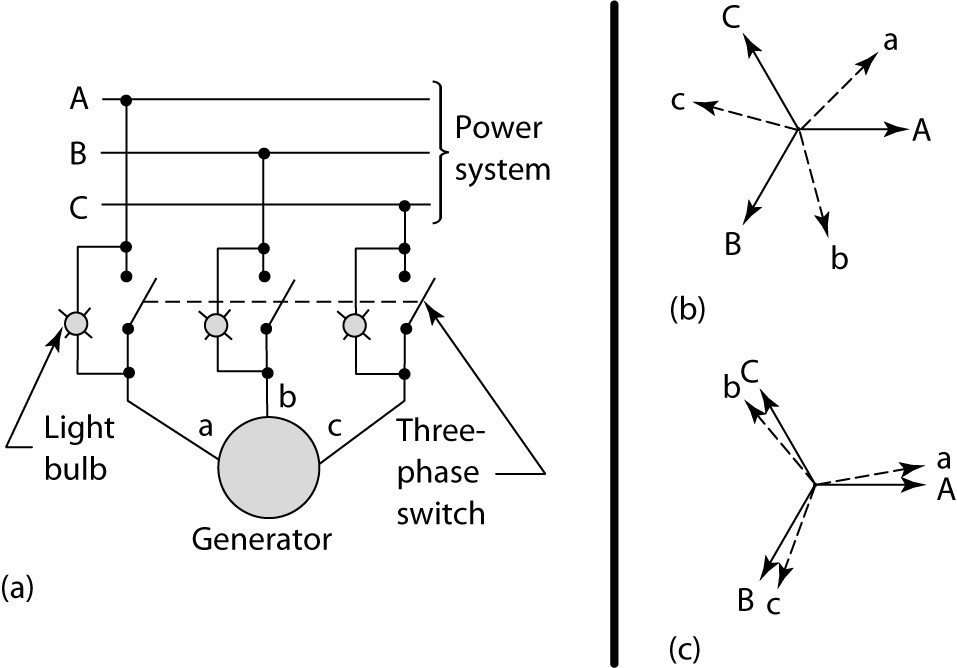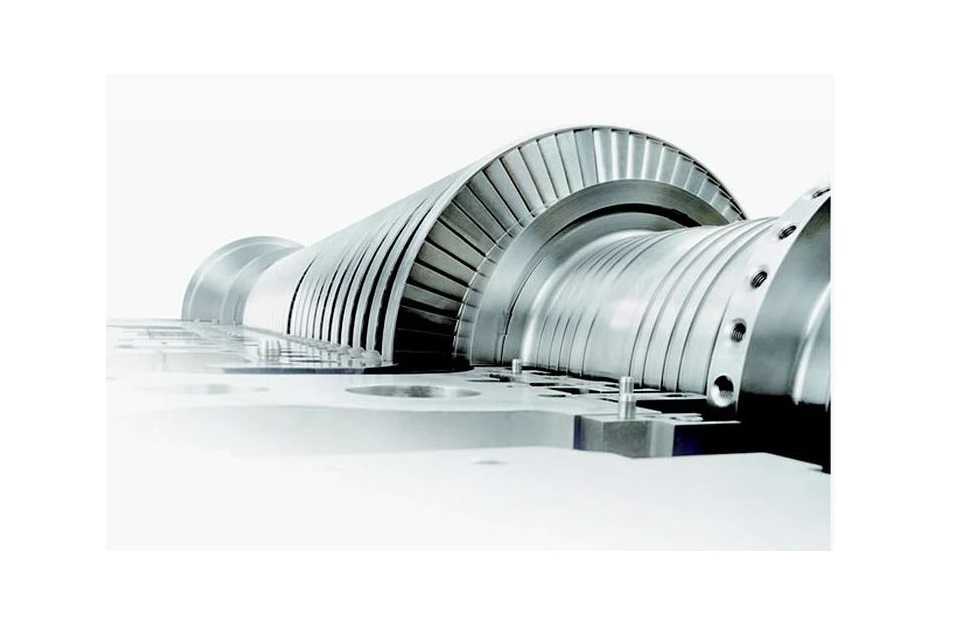Synchronization of Generators – People might go out of sync during daylight savings time, especially if they fail to adjust their clocks. Generators must be synced if they are taken out of service and linked back to the power system during changes in the load, emergencies, maintenance, and other circumstances, much like humans must synchronize their clocks with the rest of the world. You can learn everything you need to know about the synchronization of generators from this useful article from Linquip.
⇒ View a List of Generators for Sale and Their Suppliers ⇐
How We Write This Post about Synchronization of Generators
We wrote this post about the synchronization of generators by researching and gathering information from various sources. We then compile all of our findings into one comprehensive article that covers everything you need to know about the synchronization of generators. We also consulted with our experts and take advice from them to write a comprehensive and influential article about the Synchronization of Generators. We also make sure that our article is easy to read and understand by breaking it down into sections that cover different aspects of synchronization. Our goal is to provide readers with a complete understanding of synchronization so that they can make informed decisions about their generators.
What Is Generator Synchronization?
Generator synchronization is the process of synchronizing an alternator (generator) or other source’s voltage, frequency, phase angle, phase sequence, and waveform with a sound or functioning power system. Before the generator is linked to the electrical grid, this is completed. The system can resume normal operation after a generator is synced with the characteristics of another generator, alternator, or bus bar.
Generators are available from a wide range of Suppliers and Companies, as well as manufacturers and distributors, and Linquip have a large selection of Generators for Sale. Linquip’s website has a comprehensive list of generator services for all OEM fleets. Vendors from Linquip can help you with this. To learn more about how to connect with a varied collection of Service Providers who consistently produce high-quality products, please contact Generators Experts.
Care must be taken while synchronizing a generator to a power system to avoid harming both the unit and the power system as a whole. The frequency and voltage of a generator must nearly match when it is synchronized to a power grid. Before shutting the generator breaker and attaching the isolated generator to a power system, the rotor angle and the instantaneous power system phase angle need to be near.

For generator synchronization, an automatic synchronizer with manual control capabilities that may be utilized as a backup is often employed to automate the synchronization process. Synchronizing panels often show any governor and exciting changes that need to be made by the operator as well as when it’s safe to shut off the breaker.
Why Is Generator Synchronization Needed?
If any of the aforementioned characteristics do not exactly match those of the network, the generator will not be able to supply power to an electrical power system. When two or more alternators cooperate to power the load, synchronization becomes necessary. The two or more generators generating the electricity must be linked and run in parallel to manage bigger loads since electrical loads are not constant.
Parallel operation refers to using several tiny units as opposed to a single generator. Parallelization requires synchronization and many commercial plants like this configuration for:
- Reliability: Parallel operation is substantially more dependable than single-unit operation with numerous alternators. If the alternator fails in a single-unit system, the entire arrangement will shut down. If one alternator fails in a parallel system, the remaining units will keep the system running.
- Continuity: The other systems can continue to operate if one unit needs maintenance, preventing the shutdown of the entire business.
- Load: Throughout the day, your load needs could change. To accommodate larger and lower loads with more or fewer active systems, modify your parallel system.
- Efficiency: When used at their maximum load, generators work most effectively. Your system can adjust to load variations so that it always operates efficiently.
- Capacity: More electricity is needed for larger processes. Systems with more generators have more alternators, which increases their capacity.
How To Successfully Parallel Generators?
When two or more generators are linked to a bus bar with the same frequency, voltage, and phase difference, their total capacity, ease of maintenance, and active load control are increased. Then it is said that they should be connected in parallel, and the process is known as paralleling while the technique of assistance employed in this is called synchronization. It is a practical method for raising a plant’s overall power production, with much greater control and simpler maintenance.
This makes it possible to complete the task without spending money on powerful generators. The method is utilized in situations when there is a fluctuating demand for electricity with extreme extremes of too little and too much power. Two generators must have identical output waveforms for them to be synchronized. A synchroscope or techniques using dark and bright lamps can be used to accomplish this. It is necessary to maintain the incoming generator at a noticeably higher frequency to further assure safety.
Running generators are those that are already linked to the bus bar, whereas arriving generators require synchronization to connect. A higher frequency helps a generator avoid operating as a synchronous motor as the frequency of a generator significantly decreases once it is put to an active load. Furthermore, a generator should not be connected to the bus bar when it is stationary since doing so would result in a largely induced EMF in the stator winding, which might short circuit.
Connecting Three-Phase Generators in Parallel
Two or more three-phase generators are placed in heavy industries and ships with large power demands to efficiently distribute the load and offer higher output as needed. Two generators must have an equal number of phases, the same phase angle, the same voltage and frequency, and a voltage sine curve that is the same for each (waveform). As a result, the bus bar’s RYB connection point should be linked to the RYB terminals of the incoming generator rather than the RBY.
By utilizing a bright lamp, a dark lamp, or a synchroscope, a three-phase incoming generator can be synced with the one that is connected to the bus bar. Regardless of their starting speed or frequencies, generators must be eventually locked to the system frequency to be correctly synchronized. Once synchronized, they must distribute the overall load based on each person’s capabilities, not equally. Generators must be almost identical for them to share the same loads.
Steps To parallel Generators by Two Bright One Dark Lamp Method
Start the alternator’s prime mover and increase its speed to the recommended level.
Three lights should be connected to the terminal, along with a voltmeter, using the “two bring, one dark lamp” technique.
Check to see if the voltage from the incoming generator matches that of the bus bar.
If not, raise the voltage by adjusting the alternator’s field current until it matches the bus bars.
Determine if the bulb flickers in a clockwise or anticlockwise direction by keeping an eye out for it.
A clockwise movement denotes the quick speed of the incoming generator about the bus bar or operating generator, whereas an anticlockwise movement indicates a moderate pace.
To minimize the flicker of the bulb to almost nothing or as low as feasible, adjust the alternator’s speed accordingly.
Once the bulb linked in phase is dark but the other two are equally light, turn off the breaker.
Once finished, determine if the current generator needs to be turned off or if both generators need to be loaded.
This may be done by turning up the governor switch for the incoming generator while turning down the governor switch for the one operating.
Now cut off the power to the lamps and, if applicable, switch off the step-down transformer that is attached.
Connecting these bulbs to high-voltage generators using a step-down transformer is standard procedure.
Turn off the operating generator by tripping the breaker; the generator is now in standby mode.
Connecting Single-Phase Generators in Parallel
Using either the dark lamp or brilliant light technique of synchronization, a single-phase generator may be synchronized before being linked in parallel. In contrast to the three-phase generator’s dark lamp and one dark two brilliant light methods, we just utilize two lamps in this operation. The lights are connected to the terminal and the bus bar in phase for the dark lamp technique. While they are wired out of phase for the bright bulb approach.
Based on the net resulting frequency of the generators, the light bulb will flicker with alternate dark and brilliant phases. Now, the bulb won’t illuminate when the frequency and voltage of the operating generator and the incoming generator are matched. This is the case because their voltage’s root means the square value for the waveform is equal but opposite in magnitude. In general, this may be represented by two waveforms that are equal but opposing, as seen in the image below.

Close the breaker during the dark phase or period, much like in three-phase alternators. At that moment, the two outputs are exactly in phase opposition. If not done correctly, the generator could not synchronize, which could result in a blackout or reverse power trip. Pay close attention during the procedure since, in single-phase generators, the net resultant voltage may differ even though the amount of output voltage from each generator is the same.
Parallel Operation of Portable Generators – The Simple Way!
Particularly when it comes to portable generators at home or a camp, no one ever wants to delve into the intricacy of manually synchronizing generators (Picnic). Not only does it demand focus and expertise, but if something goes wrong, it might also harm the generator.
It’s not the only device available, so choose one that works with your generator and is reasonably priced. The majority of portable generators contain a special “Parallel output” or simply “Parallel” plug for connecting wires in parallel. Connect the cable ends to both generators, and the internal generator control with a built-in parallel operating program will handle it.
Requirements For Synchronization of Generators
You must ensure four parameters are in alignment between your generators while synchronizing them. These conditions are:
- Phase sequence: Your system’s three alternators must have the same phase order as the phases of your bus bar or electric grid.
- Voltage magnitude: If the alternators and bus bar are not parallel, the amount of voltage can result in substantial disturbances. A high reactive power level in your grid might be dangerous if the alternator voltage is greater than the bus bar. The generator may malfunction if the alternator voltage is too low since it will have to absorb a lot of reactive power from the bus bar.
- Frequency: Unbalanced frequencies result in an unstable energy flow. This instability might result in equipment damage.
- Phase angle: The bus bar and generator alternator’s phase angle must be zero.
You may check if these characteristics are the same between your bus bar and generator alternators using the generator synchronization technique.
Techniques for Synchronization
The concept of generator synchronization might be difficult to comprehend, however, the fundamentals of the three methods are as follows:
- Three Dark Lamps Method – uses the bus bar to synchronize the second generator; it is unable to supply frequency information for the generator and bus bar.
- Two Bright, One Dark Method – measures frequency but is unable to verify the phase sequence’s accuracy.
- Synchroscope Method – shows if the bus bar frequency is greater or lower than the alternator frequency.

To avoid manual lighting and synchroscope observations, modern synchronization technology automates the entire synchronization procedure. These techniques are far more trustworthy.
Faulty Generator Synchronization
The following things might happen if generator synchronization with a power supply is done improperly or poorly:
- Damage to the generator and prime mover from mechanical stress is brought on by the necessity to quickly accelerate and decelerate to align the rotating masses.
- Due to the large currents, the generator and step-up transformer windows may be harmed.
- disturbances in the electrical system, such as oscillations and abnormally diverging voltages
- When the protective relay detects the generator is operating in abnormal conditions, which might result in the generator shutting off, it prevents the generator from staying online and picking up loads.
Given the potential dangers of improper synchronization, all activities must take the necessary precautions while the process is underway. If you’re unclear about what to do, go to a professional; they’ll assist you to maintain your system up and running. Visit here to explore more about the faulty generator synchronization.
Conclusion
On ships, in factories, and in power plants, two or more generators are used in parallel to share the load, enhance production, make maintenance simple, and save operating costs. When load sharing and suitable synchronization are used, a generator can operate in parallel. Even though all generator panels, whether local or in the control room, have an automated synchronization feature, it is not unusual to find a backup manual synchronization option offered in case of emergency.
They must first be brought up to the same frequency to smoothly parallel the generators; one of its methods will appropriately synchronize the voltage and phase angle. A synchroscope, a dark lamp, and one dark two brilliant light approaches can all be used to synchronize a generator to another generator or the bus bar.
CONTACT LINQUIP FOR MORE
We are experts in generators and the synchronization equipment they require at the Linquip Platform. Our experts at Linquip will be pleased to assist you if you would need additional information regarding generator synchronization, the procedure, or methods to perform it. For both new and secondhand generators to support your electrical system, you can rely on us. Call us right away!
Buy Equipment or Ask for a Service
By using Linquip RFQ Service, you can expect to receive quotations from various suppliers across multiple industries and regions.
Click Here to Request a Quotation From Suppliers and Service Providers
Read More on Linquip
- Generator: Working Principles, Function & Diagram
- What is Generator Efficiency? Calculation & Formula Guide
- What Is a Generator? A Comprehensive Explanation of Working Principles, Types, and Components
- Generator Maintenance: The Most Essential Tips to Know
- Induction Generator vs Synchronous Generator: A Comprehensive Comparison
- Working Principle of Diesel Generator + Diagram
- Working Principle of AC Generator
- What is the Working Principle of a DC Generator?
- Electric Generator Maintenance, Repair, and Services (2022 Guide)
- Gasoline Generator Repair and Maintenance (2022 Guide)
- How Much Does It Cost to Install a 22kW Generac Generator?
- How Long Can A Standby Generator Run Continuously?
- What is the Difference Between a Whole House and Standby Generator?
- The Difference Between Prime & Standby Generators
- Can I install a Standby Generator Myself? (An All-In-One Guide)
- Portable vs. Standby Generator (Best Choose for Home in 2022)
- Pros and Cons of Inverter Generators in 2022



